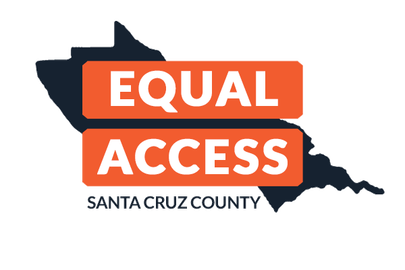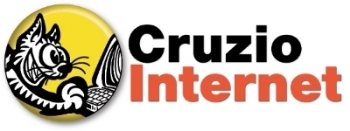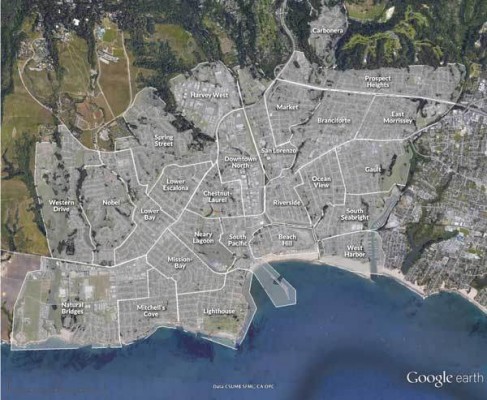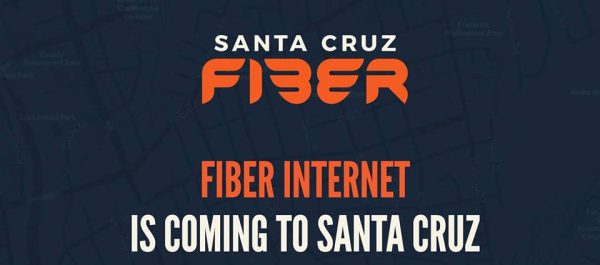Companies
Crucial to provide internet connectivity for students

By Peggy Dolgenos, Michelle Rodriguez, Faris Sabbah and Susan True
(Source: Santa Cruz Sentinel)
October 6, 2020 — Santa Cruz, CA
Santa Cruz community, business and education leaders highlight link between Internet connectivity and educational equity
Amidst the pandemic, smoke, power outages, and economic insecurity, the school year has started in Santa Cruz County with distance learning. Aptos Junior High student Mahia Aguilar had to go to a park nearby her home to connect to the internet. The park was busy and distracting, the internet was spotty, and frankly, she confessed, sometimes it was scary.
Mahia is just one of the children in the Pajaro Valley Unified School District where about 30% of families did not have home internet at the beginning of the pandemic, despite the fact that all students in PVUSD were equipped with Chromebooks. These are families that struggle financially even in the best of times, prioritizing food and rent over another service bill. Teachers are reporting that students without home internet just seem to “disappear.” These students, who already face so many obstacles to their education, are going to be further left behind.
A “digital divide” has existed for years, but internet equipment in schools and libraries helped bridge it. The pandemic has closed those facilities, revealing the lack of internet connectivity in under-resourced areas of our county, while at the same time vastly increasing the need. This need is reflected nationwide when an entire year’s worth of broadband growth happened in the first two weeks of the pandemic. Although there is urgency today, this is a longterm trend. Many aspects of education are going online even absent the pandemic. As students move from elementary to high school and beyond, internet connectivity is not only crucial to help them thrive with distance learning, it also serves as a lifeline to families to learn about and connect with the vital resources and services that are available to them now in our community.
Local internet provider Cruzio has been working on internet inequality for years but the dire conditions of COVID- 19 brought an increased urgency. Equal Access Santa Cruz County (EASC) is a coalition of local partners including Cruzio, Santa Cruz County Office of Education (COE), Pajaro Valley Unified School District (PVUSD), the Watsonville Rotary Club, Monterey Bay Economic Partnership, and Community Foundation Santa Cruz County. As a first step, Cruzio built out free high-speed wifi in school parking lots so that student families could park — socially distancing — and access the internet. Then the next phase started: work with PVUSD and COE to identify students who need a better connection locally but can’t afford it. Cruzio then builds that internet to the students’ homes.
Getting the internet to every home isn’t easy or cheap. Due to telecommunications deregulation over the last two decades, modern internet infrastructure isn’t being built in rural or lowincome neighborhoods. There simply isn’t enough return on investment in these areas to justify expensive — but essential — construction in a market-based system. Unlike national internet providers, Cruzio doesn’t receive government subsidies and can target small neighborhoods. And, EASC customers will not get old, substandard technology – they will get top-notch connections.
That’s where the community comes in. Community Foundation Santa Cruz County established a fund so anyone can make a charitable donation to connect more children to their online classrooms and poise them for future success. Hundreds of low-income families will get free and heavily subsidized internet through donations made to the EASC fund.
Internet connectivity ensures educational equity. Now it’s time to act on our values and we need to act fast. We can’t allow the digital divide to further the educational divide. Mahia’s family was one of the first to benefit from EASC. Mahia recently reported, “having the internet is helping me participate in my classes. I am able to do my homework and I don’t need to go out to look for free internet.”
Help us keep students like Mahia connected. We don’t want our children – the hope of our county’s future – to “disappear.”
Community members can learn more and make a donation to the fund at EqualAccessSantaCruz.com.
Peggy Dolgenos is the CEO of Cruzio. Michelle Rodriguez is the Superintendent of Pajaro Valley Unified School District. Faris Sabbah is the Superintendent of the Santa Cruz County Office of Education. Susan True is the CEO of Community Foundation Santa Cruz County.
###
Originally published here: https://santacruzsentinel-ca-app.newsmemory.com/?publink=1cd5c0944
###
Tagged Community Foundation Santa Cruz County, Cruzio, Pajaro Valley Unified School District








